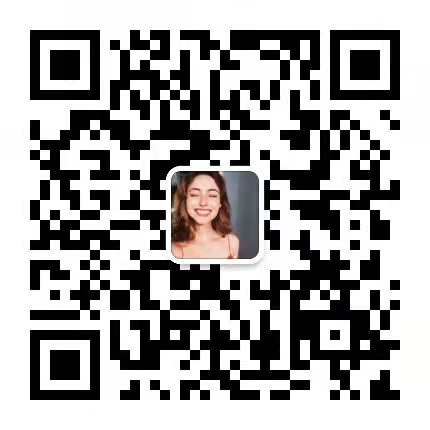Suddenly an influx of light filled my house, though the evening was at hand, and the clouds of winter still overhung it, and the eaves were dripping with sleety rain.
突然,注入的光明充满了我的屋子,虽然那时已将近黄昏了,而且冬天的灰云还布满天空,雨雪之后的水珠还从檐上落下来。
I looked out the window, and lo!
我从窗口望出去,瞧!
where yesterday was cold gray ice there lay the transparent pond already calm and full of hope as in a summer evening, reflecting a summer evening sky in its bosom, though none was visible overhead, as if it had intelligence with some remote horizon.
昨天还是灰色的寒冰的地方,横陈着湖的透明的皓体,已经像一个夏日的傍晚似的平静,充满了希望,在它的胸怀上反映了一个夏季的夕阳天,虽然上空还看不到这样的云彩,但是它仿佛已经和一个远远的天空心心相印了。
I heard a robin in the distance, the first I had heard for many a thousand years, methought, whose note I shall not forget for many a thousand more -- the same sweet and powerful song as of yore.
我听到有一只知更鸟在远处叫,我想,我好像有几千年没有听到它了。虽然它的乐音是再过几千年我也决不会忘记的,——它还是那样甜蜜而有力量,像过去的歌声一样。
O the evening robin, at the end of a New England summer day! If I could ever find the twig he sits upon!
啊,黄昏的知更乌,在新英格兰的夏日的天空下!但愿我能找到他栖立的树枝!
I mean he; I mean the twig.
我指的是他;我说的是那树枝。
This at least is not the Turdus migratorius.
至少这不是Turdus migrato- rius。
The pitch pines and shrub oaks about my house, which had so long drooped, suddenly resumed their several characters, looked brighter, greener, and more erect and alive, as if effectually cleansed and restored by the rain.
我的屋子周围的苍松和矮橡树,垂头丧气已久,突然又恢复了它们的好些个性,看上去更光亮,更苍翠,更挺拔,更生气蓬勃了,好像它们给雨水有效地洗过,复苏了一样。
I knew that it would not rain any more.
我知道再不会下雨。
You may tell by looking at any twig of the forest, ay, at your very wood-pile, whether its winter is past or not.
看看森林中任何一个枝桠,是的,看看你那一堆燃料,你可以知道冬天过去没有。
As it grew darker, I was startled by the honking of geese flying low over the woods, like weary travellers getting in late from Southern lakes, and indulging at last in unrestrained complaint and mutual consolation.
天色渐渐黑下来,我给飞鹅的映声惊起,它们低飞过森林,像疲倦的旅行家,从南方的湖上飞来,到得已经迟了,终于大诉其苦,而且互相安慰着。
Standing at my door, I could bear the rush of their wings; when, driving toward my house, they suddenly spied my light, and with hushed clamor wheeled and settled in the pond.
站在门口,我能听到它们拍翅膀的声音;而向我的屋子方向近来时,突然发现了我的灯火,喋喋的声浪忽然静下来,它们盘旋而去,停在湖上。
So I came in, and shut the door, and passed my first spring night in the woods.
于是我回进屋子里,关上门,在森林中度过我的第一个春宵。
In the morning I watched the geese from the door through the mist, sailing in the middle of the pond, fifty rods off, so large and tumultuous that Walden appeared like an artificial pond for their amusement.
在黎明中,我守望着雾中的飞鹅,在五十杆以外的湖心游泳,它们这样多,这样乱,瓦尔登仿佛成了一个供它们嬉戏的人造池。
But when I stood on the shore they at once rose up with a great flapping of wings at the signal of their commander, and when they had got into rank circled about over my head, twenty-nine of them, and then steered straight to Canada, with a regular honk from the leader at intervals, trusting to break their fast in muddier pools.
可是,等到我站到湖岸上,它们的领袖发出一个信号,全体拍动了翅膀,便立时起飞,它们列成一队形,就在我头顶盘旋一匝,一共二十九只,直向加拿大飞去,它们的领袖每隔一定的间歇便发出一声映叫,好像通知它们到一些比较混浊的湖中去用早饭。
A "plump" of ducks rose at the same time and took the route to the north in the wake of their noisier cousins.
一大堆野鸭也同时飞了起来,随着喧闹的飞鹅向北飞去。
For a week I heard the circling, groping clangor of some solitary goose in the foggy mornings, seeking its companion, and still peopling the woods with the sound of a larger life than they could sustain.
有一星期,我听到失群的孤鹅在雾蒙蒙的黎明中盘旋,摸索,叫唳,寻找它的伴侣,给予森林以超过它能负担的音响。
In April the pigeons were seen again flying express in small flocks, and in due time I heard the martins twittering over my clearing, though it had not seemed that the township contained so many that it could afford me any, and I fancied that they were peculiarly of the ancient race that dwelt in hollow trees ere white men came.
四月中看得到鸽子了,一小队一小队迅速飞过:到一定的时候我听到小燕儿在我的林中空地上吱吱叫,虽然我知道飞燕在乡镇并不是多得让我在这里也可以有一两只,但是我想这种小燕儿也许是古代的苗裔,在白人来到之前,它们就在树洞中居住了。
In almost all climes the tortoise and the frog are among the precursors and heralds of this season, and birds fly with song and glancing plumage, and plants spring and bloom, and winds blow, to correct this slight oscillation of the poles and preserve the equilibrium of nature.
几乎在任何地区,乌龟和青蛙常常是这一季节的前驱者和传信使,而鸟雀歌唱着飞,闪着它们的羽毛,植物一跃而起,花朵怒放,和风也吹拂,以调正两极的振摆,保持大自然的平衡。
As every season seems best to us in its turn, so the coming in of spring is like the creation of Cosmos out of Chaos and the realization of the Golden Age.
每一个季节,在我看来,对于我们都是各极其妙的;因此春大的来临,很像混饨初开,宇宙创始,黄金时代的再现。
"Eurus ad Auroram Nabathaeaque regna recessit, Persidaque, et radiis juga subdita matutinis."
“Eurus ad Auroram Nabathaeaque regna recessit,Persldaque,et radiis juga subdita matutinis.”
"The East-Wind withdrew to Aurora and the Nabathean kingdom, And the Persian, and the ridges placed under the morning rays.
“东风退到曙光和拿巴沙王国,波斯,和置于黎明光芒下的山冈。
Man was born.
人诞生了。










